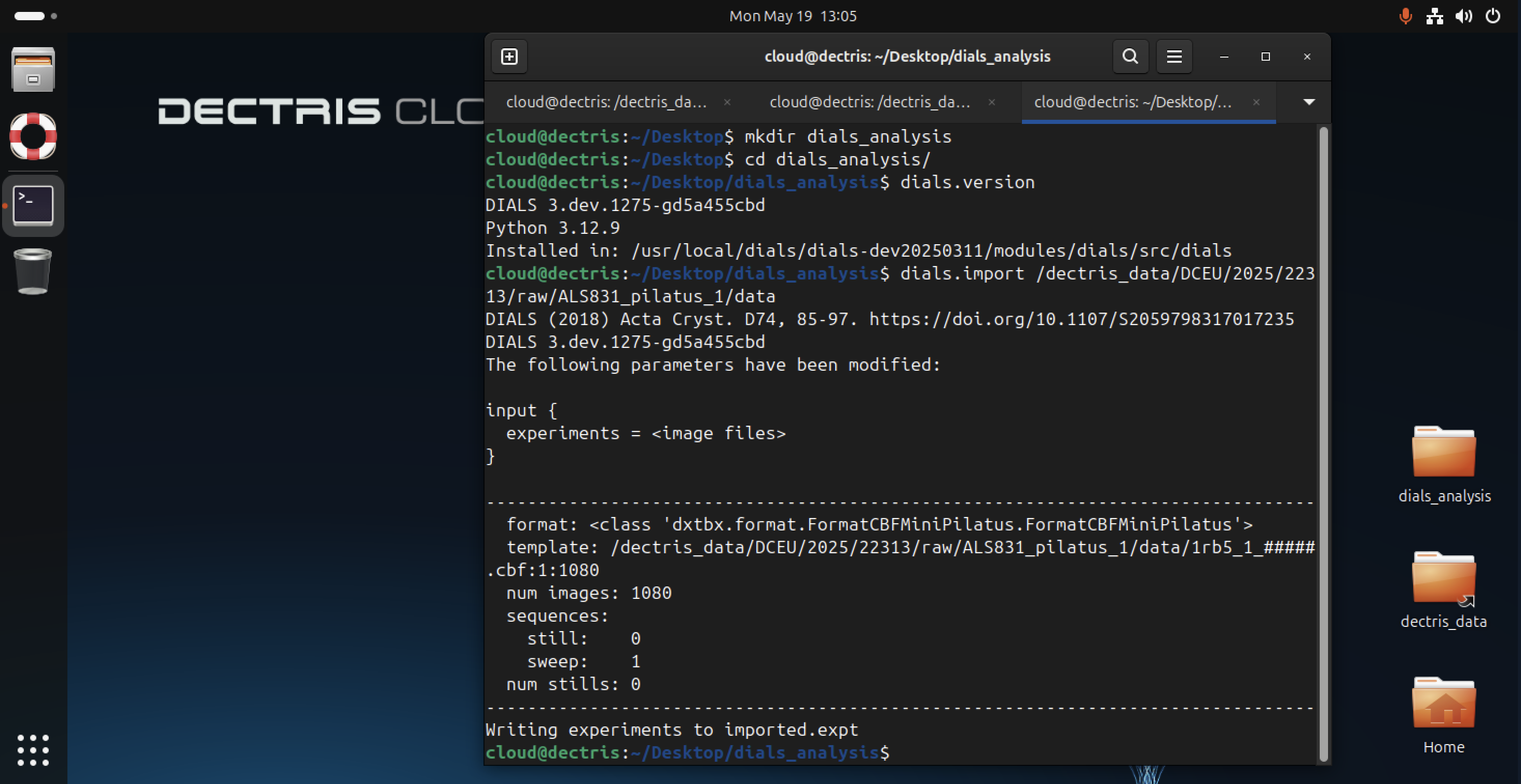DIALS
Introduction
The public DIALS environment provides a fully configured installation of the Diffraction Integration for Advanced Light Sources (DIALS) software, designed for comprehensive command-line analysis and processing of X-ray diffraction data. This setup enables straightforward access to all essential DIALS commands and functionalities.
Environment configuration
Installation directories
All DIALS binaries and resources are installed in /usr/local/dials. The environment automatically sources the necessary configuration (dials_env.sh) upon launching a terminal, allowing immediate execution of DIALS commands from any directory.
Usage example
To verify your installation and view version details, run:
dials.versionList available commands:
libtbx.show_commandsYou can also view help for individual commands by running:
<command_name> --helpFor example:
dials.import --helpTo import and process your data, you can use standard DIALS workflows directly. For example, to import experimental data:
dials.import path/to/your/dataAs in the minimal example below:

Configuring job templates
If you are creating custom job templates or scripts for automated data analysis with DIALS, ensure that the environment is loaded by including the following line at the start of your script:
source $(find /usr/local/dials -type f -name "dials_env.sh")Public job templates
The following job template(s) have been created for this environment and made public:
- DIALS example job: Example of how to use DIALS for data import, spot finding, indexing, integration, and merging within a job template
Version history
Version 0
- Initial installation of DIALS (Version DIALS 3.dev.1275-gd5a455cbd)
References
- DIALS documentation: https://dials.github.io/
- DIALS GitHub repository: https://github.com/dials/dials
- User Tutorials: https://dials.github.io/documentation/tutorials/index.html
- DIALS: implementation and evaluation of a new integration package. Winter G, Waterman DG, Parkhurst JM, Brewster AS, Gildea RJ, Gerstel M, Fuentes-Montero L, Vollmar M, Michels-Clark T, Young ID, Sauter NK, Evans G (2018). Acta Crystallogr D Struct Biol 74, 85-97. https://doi.org/10.1107/S2059798317017235
